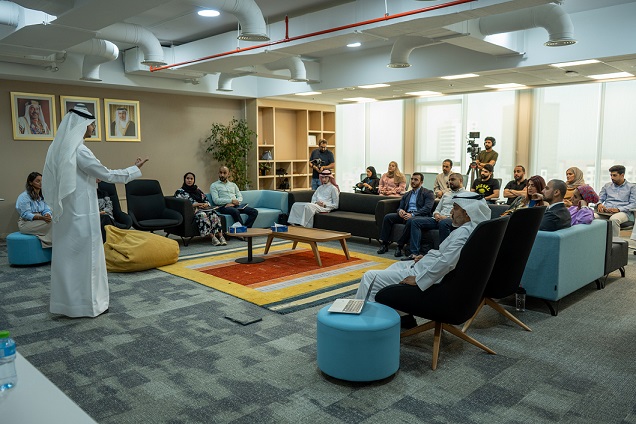For more than two decades now, economists have dubbed government-run pay-as-you-go (PAYG) pensions giving a life-time income guarantee through a defined benefit (DB) system as something of a time-bomb. This is because the worldwide pension gap (or pension gap epidemic) is expected to reach a total of $400 trillion by 2050, a sum five times the size of the current global economy.
Pension gap is simply defined as the difference between the present value of the yearly lifetime income needed to sustain a reasonable standard of living and the actual amount saved for retirement, plus the present value of PAYG contributions over a 40-year period.
Exacerbating this for many years now is a demographic shift seeing the number of those aged 60 to 90 years old growing bigger than those aged 1 to 5 years old in a number of nations around the world.
To face mounting concerns on the long-term viability of DB systems, the world saw new financial models for pension savings where ‘retirement income sustainability’ is the name of the game. That’s why in today’s pension landscape of developed markets, sustainability is built via an infrastructure comprising three or four pillars of pension savings “or the so-called diversification of savings”.
And one of the big differentiators between these pension pillars at the operational level is the (contribution) payment mechanism, whether it’s done at the individual level (private pension through retail) or group level (via employers/ payrolls).
To put this in perspective, since the advent of German’s Bismarck pension system in the late 19th century, retirement systems around the globe are estimated to have garnered a total of US$150 trillion. Today’s global pension assets stand at around US$60 trillion. These assets have been accumulated through hundreds (maybe thousands) of social security, social insurance, provident funds, superannuation funds, defined contribution (DC) employee pensions and private pension plans around the world. The key mechanism to enable this was the power of payroll savings. It’s hard to imagine how the world could have otherwise achieved such a thing outside the payroll mechanism!
How does this big effort play out in the age of Fintech?
Technology is growing rapidly and there’s no looking back. While every business is shifting its focus towards offering customer convenience, the Fintech industry is no exception.
Financial institutions are always in need of innovative ideas to keep their customers engaged and build customer loyalty. Therefore, selecting and operating software is at the heart of digital transformation and creating a unique user experience, both for the individual as well as the corporate user.
A quick look at the high-level figures would make it certain that digitalisation and software are intrinsically the heart and blood of the financial industry for decades to come. Global financial assets are currently estimated at US$267 trillion, of which US$183 trillion are banking assets (administered by banking software), US$101 billion is equity market capitalisation (administered by brokerage and asset management software) and US$60 trillion are pension assets (administered by pension administration software) – of course there’s an overlap in between these sectors as the financial market is well connected, and what’s someone sees as a banking asset is also booked by another stakeholder as a capital market or pension asset, and vice versa.
If these figures reveal anything, they underline the significance and underlying fundamental role of financial software in general, but they also prove that technology and financial industry are really integrated.
In this article, we focus on pension software, and we compare the design and operations of DB system and Thrift Plan (also known as Defined Contribution pension plan) as two common payroll-based pension-savings systems adopted worldwide. Both are built to support and operate a huge client-base (up to millions of scheme members), nevertheless, the first system is always adopted in the government (social protection) space especially in the MENA region, while the second system is operated by the private sector/ financial industry.
In this analysis, we argue that both are savings accumulation and administration platforms, however, the DB system is today serving much bigger cohorts worldwide, mostly non-public facing with a simple, plain workflow; whereas the Thrift Plan (employer-run pension schemes) is comparatively serving a smaller number of members that is significantly increasing, with a much deeper workflow, more sophisticated interactive functionality and greater user experience (UX).
This comparison might not appeal much to the average reader, however, it’s so important to executives and decision makers in government pension authorities, private-sector asset managers, wealth managers and life insurance firms as they start considering launching group savings schemes or digitalise existing savings and pension operations.
If we start with clients onboarding, the DB pension is part of the mandatory national tax regime (public finance) hence, it only takes a simple procedure to register an entity in a government pension system by uploading the entity’s commercial register and create a user and address profile. Whereas a Thrift Plan (TP), as a private-sector financial product, would normally go through a regulated Know-Your-Client (KYC) and Anti-Money Laundering (AML) checks. Although onboarded TP clients are mostly corporates rather than individuals, still a legal onboarding process would be required per the applicable rulebooks.
A second feature would be retirement planning and calculation. In the DB system, scheme members’ contributions are automatically deducted from their salaries in line with national pension laws. For members, the public pension fund is almost a black box that they don’t see or control, where the contribution rate is unified and pre-set for all. While in the case of a TP system, scheme members have a wide choice for setting their contributions, usually through a cap set by their employers, and in the age of digital life and gamification, members are more inclined towards calculating how much retirement income they would like to have, or how much money they can accumulate using various contribution levels and durations.
Key to such dynamic retirement planning would be the embedding of certain risk-adjusted investment profiles/ asset allocations or lists of funds that would generate different economic scenarios for a future retirement income. The ability to see funds’ past performance or compare future outcomes of two or multiple funds or investment strategies is so essential in this functionality.
A third feature would be risk profiling. In the DB system, the investment aspect is totally absent for members and the investment performance is not part of the deal. In mandatory or voluntary employee savings schemes, the investment affair is a big deal. And because of the risks associated with investments, a risk profiling mechanism would be required either as part of regulatory onboarding measures in the case of a financial provider, or a guidance tool to aid members choose the investment options suitable with their risk understanding/ appetite in the case of inhouse unregulated schemes.
A fourth feature would be the ‘investment philosophy’ and choices. As explained above, there is no (public-facing) investment component for members in the DB system architecture where government public finance or separate asset management arms look after scheme’s asset management. In Thrift Plan structures, both those provided by financial institutions and those managed inhouse by employers, there must be a clear statement/ direction on how moneys are managed, the basis upon/ purpose for which a certain investment philosophy has been created and hence the adequate investment choices given to employees. From a fiduciary point of view, there must be clear ‘suitability’ factors for crafting an investment strategy for this type of clients and the scheme purpose. This is a major design and educational piece in employee savings products.
A fifth feature, that’s connected to the point just mentioned, is members’ capability to switch funds and edit their investments in an informed, simplified and compliant manner, while acknowledging all potential risk/ return scenarios on their plans.
A sixth difference is reporting/displaying to members the daily valuations of their savings/portfolios in line with the daily performance and closing of capital markets. Depending on investment products powering these schemes, sometimes the ‘net asset value’ (NAV) calculation is not done daily but weekly, monthly or quarterly.
A seventh dimension that’s very sophisticated in top-tier Thrift Plan software is ‘vesting’, and that’s to calculate how much on a daily/ monthly basis the employee has become eligible to earn/ withdraw money accumulated for him or her for the employer’s contribution part.
As is known to many, Thrift Plans may be contributory or non-contributory in design, depending on employers’ corporate philosophy and financial appetite to match employees’ contributions in such schemes. In the case of a contributory scheme, employers would often provide this benefit as part of their employee value proposition and retention strategy. Hence, they would usually link their matching contributions and employee’s eligibility for their money with a conditional length of service with the organisation.
Therefore, in the case of a contributory savings scheme, a cutting-edge software would also report the daily ‘vested’ (vs. un-vested) amount on its sophisticated dashboard that includes daily NAV, risk profile, asset allocations (by class, sub-class, manager, geography, etc) fund performance, available funds for withdrawal, loan-payments amongst other vital portfolio information.
The eighth feature is around viewing and monitoring the vital KPIs of your portfolio on a user-friendly and meaningful dashboard to follow the plan’s progress from time to time, with a capability to edit or re-calibrate certain aspects or send queries to the administrator. And this brings us to a wide range of functionalities and requests (such as withdrawals, editing goals, switching funds, changing allocations, portfolio rebalancing, changing contributions or payment mechanism, sending queries, etc.) that make the Thrift Plan a truly and highly interactive self-service platform.
The nineth feature is push-notifications/ alerts generated by the App to notify scheme members about transactional and request updates, invoicing, educational tips, investment insights, etc.
Talking in detail about all the design differences between a DB and DC (Thrift Plan) may be too long to accommodate it in this article, but we hope that this piece will contribute to raising the financial executives’ awareness about these digital solutions and operations as our region prepares to introduce long-awaited fundamental reforms in pension savings.
In the last thirty years, the financial assets of pension funds in many countries have grown to match or exceed those of top sovereign funds. Today, the financial industry in MENA is presented with tremendous opportunities to grow its assets under management (AUM) by proactively offering Thrift Plans and building their capabilities in employee savings products that are fundamentally identical to public pension funds in terms of bulk business and assets scale.




